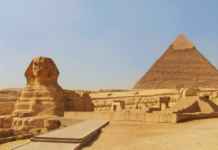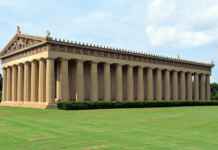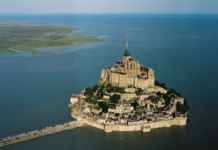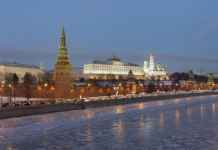Château de Chambord in Loire Valley epitomises the pinnacle of the French Renaissance. 19th-century novelist Henry James said about this prestigious monument, “Chambord is truly royal – royal in its great scale, its grand air, and its indifference to common considerations.” and rightly so. Significantly, the Chambord has 440 rooms, 84 staircases and 365 fireplaces.
Surrounded by 13,000 acres of wooded parkland, Château de Chambord is the second most visited château in France, after Versailles. However, there is little clarity about the architect of this magnificient manor. While some credit its design to Leonardo da Vinci, others claim that French Renaissance architect Philibert Delorme had a major role in designing it.
Château de Chambord is approximately a 2 hour drive from Paris. The nearest train station is Blois. Visitors should note that that Château de Chambord is closed on January 1, February 4, and December 25, so plan your trip accordingly. The ticket costs €11,00 for admission to the château. Visitors have a variety of options to explore Château de Chambord, namely 90-minute tours in a 4×4 vehicle, guided tours on bike and horseback among numerous others.
Chambord experiences cold and temperate climate throughout the year, accompanied with significant rainfall as well. In fact, the average annual rainfall is 865 mm. The month of July witnesses maximum rainfall, whereas April is usually the driest month. It is usually, only in the month of July that the weather is most comfortable, thereby attracting numerous visitors to Chambord. In fact, Château de Chambord attracts upto 8,000 visitors a day during this period.
The construction of Château de Chambord was initiated by 21-year-old Francois I and the structure was intended to be a hunting lodge in the Forêt de Boulogne. He also wanted to divert River Loire to create a moat but that didn’t happen. Significantly, the château was completely unfurnished during this period. In 1519, this lodge was destroyed and creation of the present-day Chambord began. It was finally in 1685, that Louis XIV completed the 440-roomed structure.
Château de Chambord has an elaborately developed roof line, which also originally doubled as a viewing terrace to observe hunts etc. As the visitor walks towards this jaw-dropping sight, they are bound to notice that chateau’s façade is deliberately asymmetrical, which further adds to its beauty. In fact, to an extent, in terms of structure, the Waddesan Manor, England, depicted in the movie ‘Kabhi Khushi Kabhi Gham’, was inspired by this manor. Interestingly, visitors would notice a salamander inscribed numerous times inside the chateau. Actually, it appears over 800 times throughout the château, as Francois I, the original creator of the chateau chose it as his royal insignia.
The centerpiece of Château de Chambord and also an architectural highlight is the double helix staircase, both of which ascend up to the third floor. Thus, it has been designed in such a manner that a person ascending and a person descending would never meet. The grandest quarters in the château are the State Apartments, where visitors can take a look at Louis XIV’s redecorated bedchamber. Tourists also make it a point to visit Francois I’s bedchamber where the king, allegedly hurt by unrequited romance, scratched this message onto a pane of glass – ”Souvent femme varie, bien fol est que s’y fie” (“every woman is fickle, he who trusts one is a fool”).
Château de Chambord has also been nicknamed as the jewel of Loire Valley. It is only when one visits the place that they can comprehend the timeless gorgeousness of this splendid structure.














